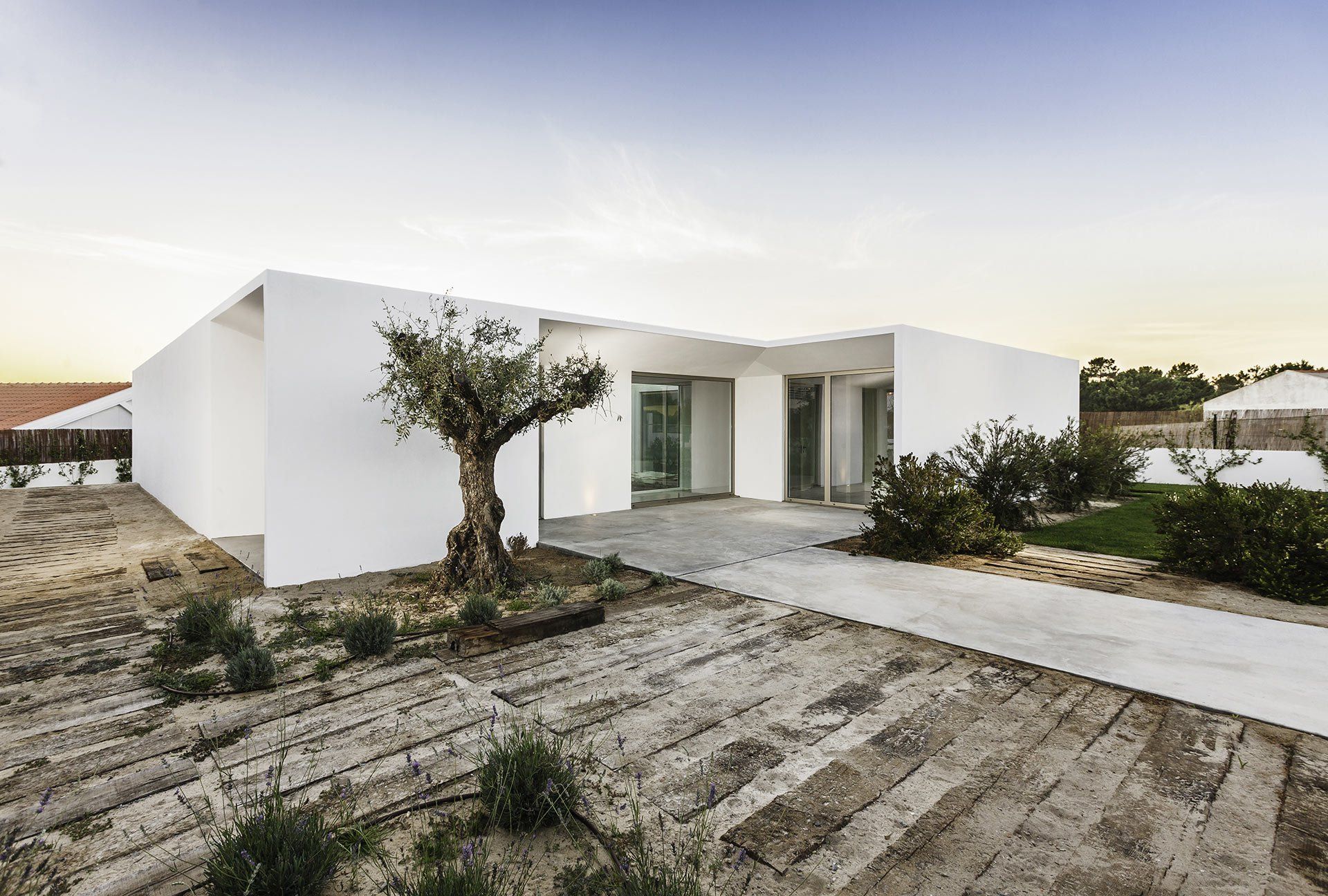Blackstone Blog
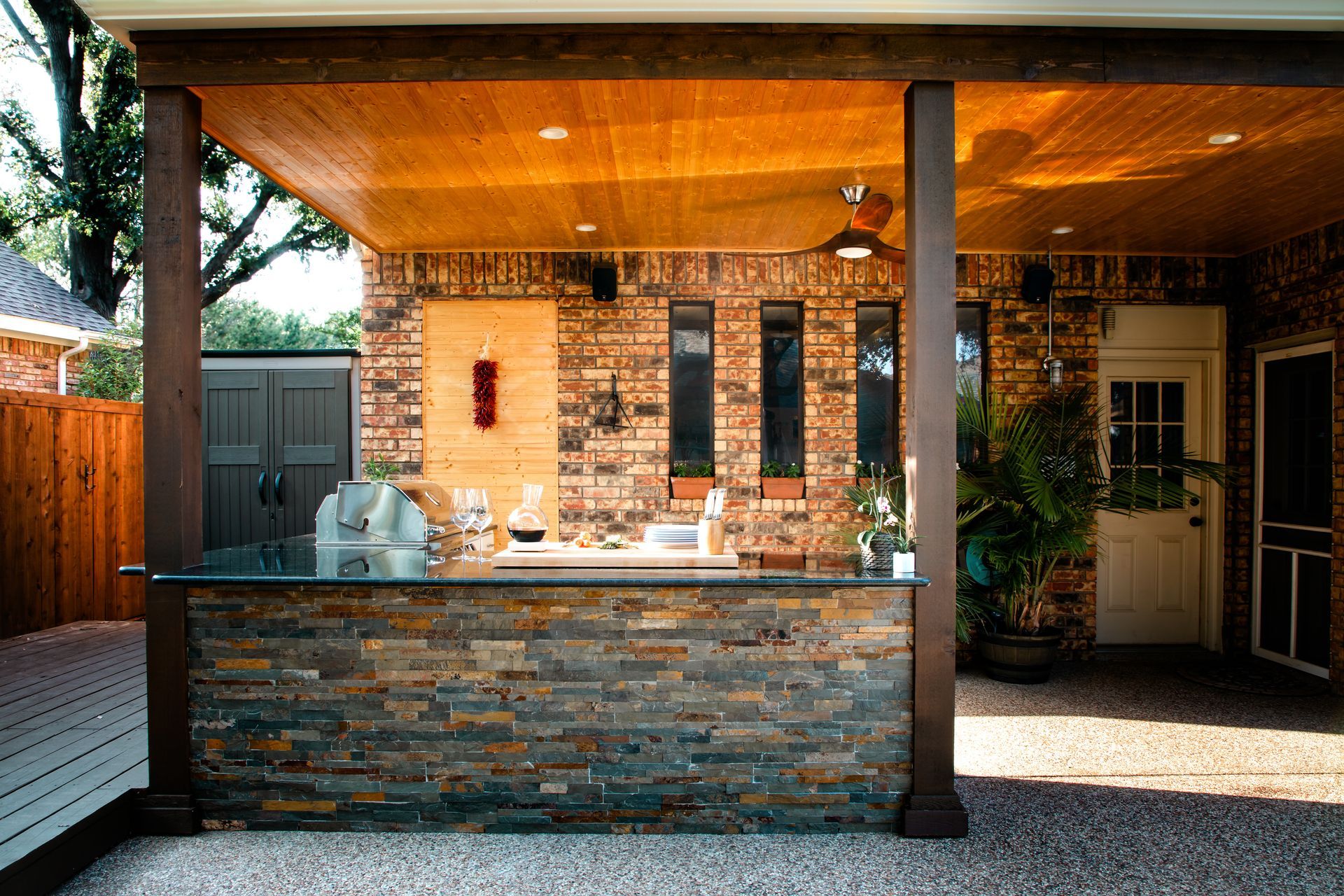
February 17, 2025
When choosing natural stone for your home, it’s easy to focus on aesthetics and durability—but have you considered how climate plays a role in your selection? Weather conditions can impact the longevity and performance of stone surfaces, indoors or outdoors. Understanding how stone interacts with your local climate can help you make an informed decision, ensuring your investment remains beautiful and functional for years. How Climate Affects Stone Selection Stone is one of the most durable building materials available, but different types react uniquely to environmental factors. Heat, moisture, freeze-thaw cycles, and humidity influence how well your stone holds up. Choosing the right stone for your climate can prevent cracking, fading, erosion, or staining. Let’s explore the best stone options based on different climate conditions.

November 12, 2024
Investing in your home often involves considerations about the potential return on investment (ROI), particularly regarding renovations and upgrades. Among the many materials homeowners can choose to invest in, high-quality stone surfaces stand out for their ability to significantly enhance property value. From granite countertops to marble flooring, including natural stone in a property boosts its aesthetic appeal and marketability, attracting potential buyers with the promise of durability and timeless elegance. Here’s how incorporating stone into your home can be a wise investment. Aesthetic Appeal and Timeless Elegance Stone surfaces bring an undeniable allure to any space. Natural variations in color, pattern, and texture make each installation unique, offering an exclusive luxury that synthetic materials cannot replicate. This high-end look is highly sought after in the real estate market, where properties that exude luxury and taste often fetch higher prices. Stone surfaces such as marble, granite, or quartzite in kitchens, bathrooms, and living areas appeal to potential buyers, who view these features as desirable upgrades. Durability and Longevity One of the key factors contributing to stone’s value-enhancing properties is its durability. When properly maintained, stone surfaces can withstand the rigors of daily use without showing signs of wear and tear. This makes them an excellent investment for high-traffic areas like kitchens and hallways. The longevity of stone not only means that it remains functional and beautiful for decades but also that it won’t require frequent replacement or repair, a selling point for prospective homebuyers who are often looking for low-maintenance homes. Increased Home Value Studies and real estate reports consistently show that homes with natural stone finishes tend to have higher resale values than those without. For instance, kitchens and bathrooms with stone countertops are often major selling points. Investing in quality stone surfaces can yield a significant return, with some estimates suggesting that homeowners can recoup more than 100% of the cost of a kitchen remodel featuring high-end stone countertops when they sell their home. Marketability and Desirability Stone surfaces make a property stand out in the real estate market. Homes featuring natural stone are often perceived as better maintained and more luxurious than those without. This perception can reduce the time a house spends on the market and attract a higher caliber of buyer willing to pay a premium for a home with sophistication and quality. Energy Efficiency and Natural Benefits Beyond beauty and durability, natural stone offers additional benefits that can be appealing from an investment standpoint. Stone's natural thermal mass helps regulate indoor temperatures, contributing to home energy efficiency. This can be a selling point in areas with extreme temperatures, where energy costs can be a concern. Choosing the Right Stone While the advantages of stone are clear, not all stone is created equal. Choosing the right type of stone—considering factors like the area's climate, the stone’s porosity, and the home’s overall style—is crucial. Consulting with professionals who understand the nuances of different stone types and their applications can ensure that the investment adds beauty and functionality to the home. Conclusion Incorporating high-quality stone surfaces into a home renovation or construction is a smart investment that enhances the space's visual appeal, functionality, and market value. With their luxurious appearance, robust durability, and timeless elegance, stone surfaces offer a competitive edge in the real estate market, promising an excellent return on investment through increased property value and appeal. Whether planning a full-scale renovation or a simple upgrade, considering stone as a material choice can significantly contribute to a home’s long-term value and appeal.
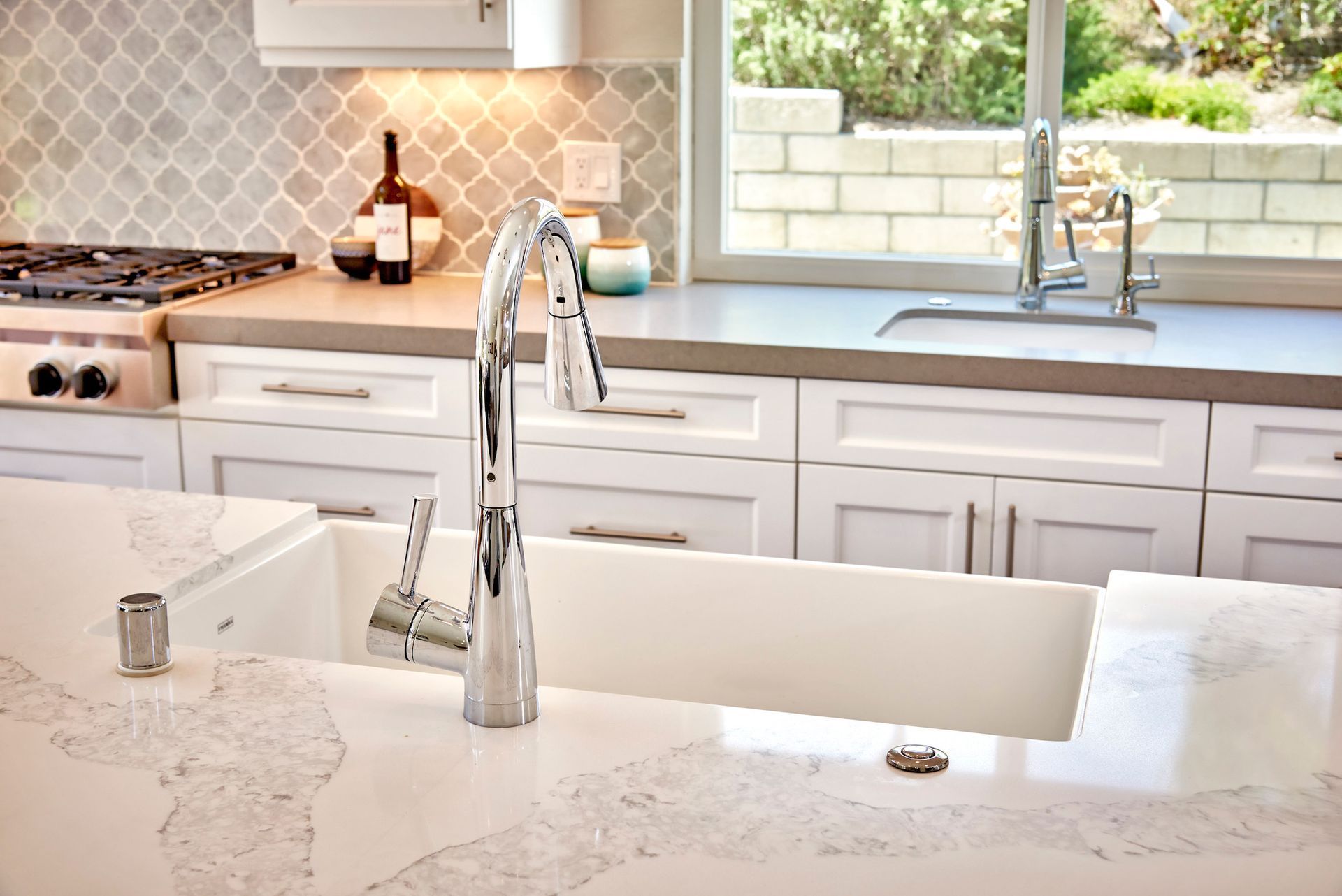
October 23, 2024
Stone surfaces bring natural beauty and sophistication to any space, but their longevity depends greatly on how they are cared for. Whether you’ve chosen granite for your kitchen countertops, marble for your bathroom vanity, or slate for your patio, understanding how to maintain these materials is essential. Understanding Your Stone Before diving into maintenance, it's crucial to know your type of stone, as different materials require different care methods. Classify your stone as siliceous (granite, sandstone, slate, quartzite), which is durable and acid-resistant, or calcareous (marble, limestone, onyx, travertine), which is softer and reacts to acids. Daily Maintenance 1. Regular Cleaning For All Stones: Use a soft cloth or a sponge with warm water and a mild, pH-neutral detergent. Avoid harsh chemicals, abrasive cleaners, or acidic solutions (like vinegar), especially on calcareous stones. For Siliceous Stones: You can occasionally use a mild bleach solution for deep cleaning but rinse thoroughly afterwards. After Cleaning: Always dry the surface with a soft cloth to prevent water spots and streaks. 2. Spill Management Immediate Action: Blot spills promptly instead of wiping them to avoid spreading the spill. This is particularly important for substances like oil, wine, coffee, and citrus juices that can stain or etch the surface. For Oily Stains: Use a poultice of baking soda and water to draw out the oil before it sets into the stone. Preventive Measures 1. Sealing Test First: Conduct a water test to see if your stone needs sealing. Drop a few beads of water on the surface; if it beads up, the seal is good; if it soaks in, it’s time to reseal. Application: Apply a penetrating sealer recommended for your specific type of stone. Depending on usage and stone porosity, this should be done every one to two years. 2. Use Trivets and Cutting Boards Use trivets for hot dishes and cutting boards for chopping and slicing to protect your stone surfaces from heat and scratches. 3. Furniture Protection Use felt pads under furniture legs to prevent scratches when moving chairs or tables for stone flooring. Periodic Maintenance 1. Deep Cleaning Schedule a professional deep cleaning every few years to restore the stone's original luster, especially for high-traffic areas or outdoor stones. 2. Scratch and Damage Repair For minor scratches, polishing compounds may help, but professionals should repair deeper scratches and chips. 3. Annual Inspection Conduct an annual inspection of your stone surfaces to check for signs of wear or damage. Look for loose tiles, cracks, and joint integrity. Special Considerations for Outdoor Stone Outdoor stones are exposed to more harsh conditions and require additional care: Regular Sweeping: Keep the surface free of debris to prevent scratching. Weather Protection: If possible, cover stone surfaces during extreme weather or treat them with a weather-resistant sealant to protect against freeze-thaw cycles and sun damage. Conclusion Maintaining stone surfaces does not have to be a daunting task. With the right knowledge and a bit of routine care, your stone can remain beautiful and durable for decades. Regular cleaning, proper sealing, and using protective measures can all contribute to the longevity of your stone surfaces. Remember, the better you care for your stone, the longer it will maintain its natural beauty and functionality in your home.

August 23, 2024
In the interior and exterior design world, the quality of materials often takes the spotlight—particularly when it comes to choices like natural stone, quartz, or porcelain. However, how these materials are installed is equally crucial. Precision installation plays a pivotal role in stone products' durability and aesthetic quality. Understanding the importance of skilled craftsmanship can help you make informed decisions when selecting your stone and choosing who installs it. Why Precision Installation Matters 1. Ensuring Durability The quality of the installation significantly influences the longevity of stone surfaces. Properly installed stone can withstand decades of use, resisting common issues like cracking, chipping, or dislodging. Professional installers ensure the stone is correctly aligned, securely fixed, and supported, reducing the risk of damage over time. This is especially critical in high-traffic areas or in applications like kitchen countertops and flooring. 2. Maintaining Aesthetic Integrity Poor installation techniques can diminish the stone's visual appeal. Mismatched patterning, uneven surfaces, and poorly handled joints can detract from the beauty of the material. Skilled craftsmen are adept at matching veining at seams, ensuring that the flow of the stone's natural patterns is preserved, enhancing the overall design. They also ensure that the finish of the installed stone is flawless, without any uneven or prematurely worn areas. 3. Preventing Future Issues Precision installation helps avoid many common problems that might require costly repairs. For example, ensuring sufficient and correctly applied sealant can prevent water damage and staining, particularly in porous stones like marble or limestone. Professional installers are also crucial in advising and executing the right preparation steps, such as ensuring the subflooring or underlying cabinetry can support the stone's weight. 4. Customization and Fit Each space has its unique dimensions and challenges, such as odd angles or unusual layouts. A professional stone installer will measure and custom-cut the material to fit precisely, which is vital for achieving not only the best look but also the functionality of the space. This custom fitting is particularly important in installations like integrated sinks, complex island shapes, or backsplashes with intricate designs. Choosing the Right Installer Selecting the right professional for your stone installation involves several considerations: Experience: Look for a team with extensive experience, specifically in stone installation. Experienced installers bring a level of precision that comes from years of working with different materials and overcoming various challenges. Reputation: Check reviews and ask for references. A reputable installer should be able to provide examples of their work and demonstrate their capability. Specialization: Ensure the installer has specific experience with the type of stone you use. Different stones require different handling, tools, and installation techniques. Consultation: A good installer will offer a thorough consultation process, taking the time to understand your specific needs and the details of your space. Conclusion The installation of stone products is not just a necessary step in the process of your design project; it is a critical component that impacts the overall success of the finished product. Skilled craftsmanship in stone installation ensures durability, enhances aesthetic quality, and maximizes the value of your investment. When planning your next project that involves stone, remember that the person who installs it is as important as the material itself. Precision installation by a qualified professional is the key to enjoying beautiful, long-lasting stone surfaces in your home or business.
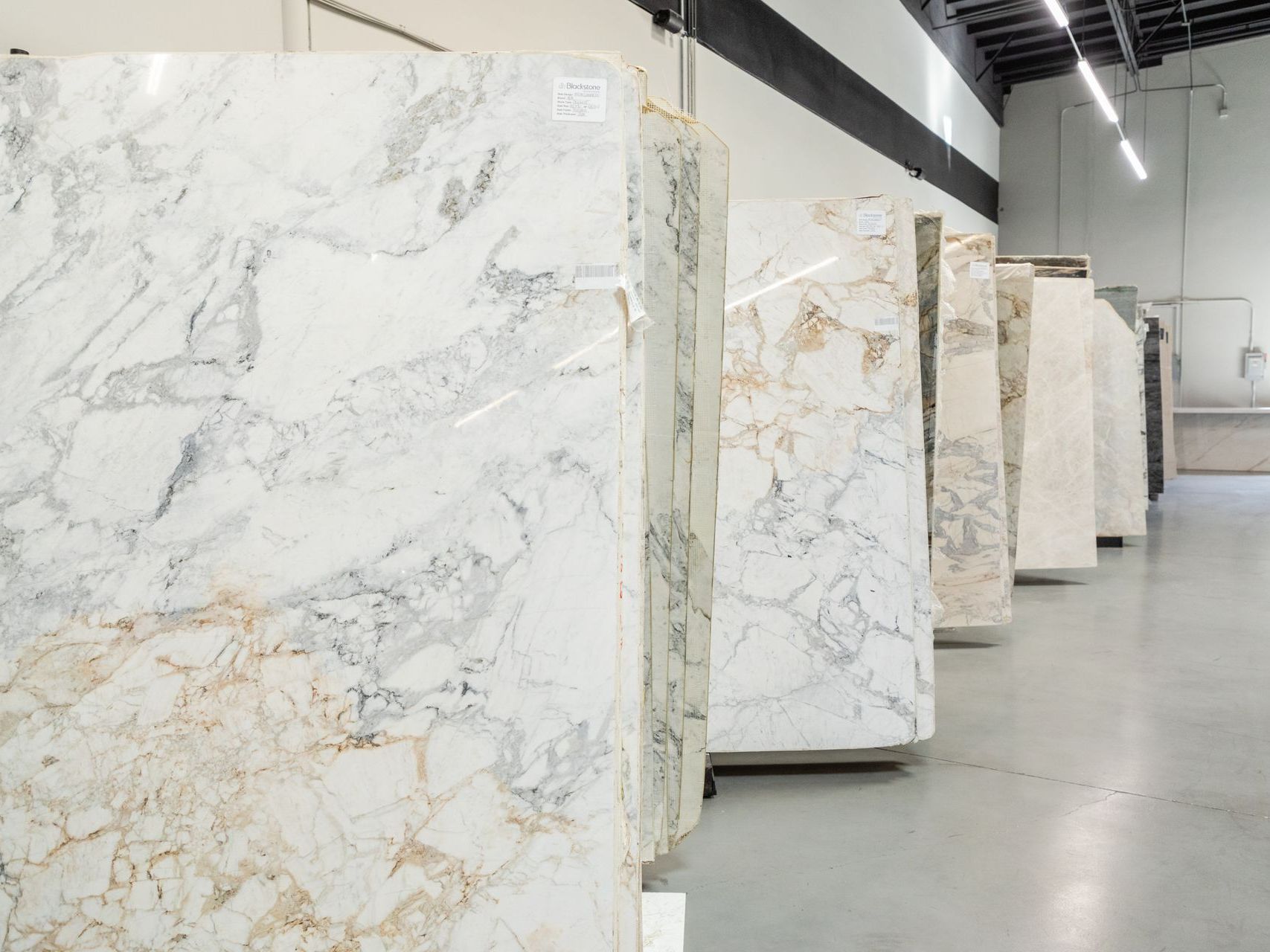
July 23, 2024
The options can seem endless when selecting materials for your countertops, flooring, and other surface applications. Among the most popular choices are natural stone, quartz, and porcelain. Each of these materials offers unique benefits and aesthetics, making the decision process a crucial part of any design project. This comprehensive guide'll delve into the properties, advantages, and ideal uses of natural stone, quartz, and porcelain to help you make an informed decision that aligns with your specific needs and preferences. Natural Stone Properties Natural stone includes various materials such as granite, marble, limestone, and slate, each with unique patterns and colors. Being quarried directly from the earth, each piece of natural stone is one-of-a-kind, with distinct veining, speckles, and swirls. Benefits Aesthetics: Natural stone offers unparalleled beauty, and each piece is unique. Durability: Most natural stones are highly durable and will last a lifetime with proper maintenance. Adds Value: Natural stone can increase the value of your property due to its luxury appeal. Best Uses Countertops and Flooring: Granite and marble are popular for their resilience and timeless appearance. Bathroom Vanities and Wall Features: Marble is often used for its classic aesthetic. Quartz Properties Quartz is an engineered stone comprising about 90-95% natural quartz mixed with resin and pigments. This composition allows for various colors and patterns, including options that mimic natural stone. Benefits Uniformity: The manufacturing process ensures consistent patterns and colors throughout. Low Maintenance: Quartz does not require sealing and is resistant to staining and bacteria. Durability: It is incredibly durable and resistant to scratches and chips. Best Uses Kitchen Countertops: Quartz’s non-porous nature makes it ideal for busy kitchens. Bathroom Surfaces: Its resistance to moisture and bacteria is perfect for bathrooms. Porcelain Properties Porcelain is a type of ceramic made from refined clay and fired at extremely high temperatures. It comes in large slabs or tiles and can be printed to look like natural stone, wood, or even metal. Benefits Versatility: Available in a wide range of designs due to digital printing technology. Durability: Porcelain is tough, scratch-resistant, and more impervious to water than natural stone. Low Maintenance: Requires minimal upkeep and is easy to clean. Best Uses Outdoor Applications: Its low water absorption rate suits outdoor environments. Flooring and Wall Cladding: Offers a lightweight yet durable solution for large areas. Making the Right Choice When deciding between natural stone, quartz, and porcelain, consider the following factors: Aesthetic Preference: Do you prefer the unique, organic look of natural stone, the consistent patterns of quartz, or the versatile porcelain designs? Usage Requirements: Consider the space's durability and maintenance requirements. Kitchens and bathrooms might benefit from more durable and low-maintenance materials like quartz and porcelain. Budget: Natural stone tends to be more expensive than quartz and porcelain, though prices can vary widely based on the type and origin of the stone. Conclusion Natural stone, quartz, and porcelain materials offer distinct advantages and characteristics that make them suitable for different applications and styles. By understanding the properties and benefits of each, you can choose a material that meets your practical needs and complements your home’s design. Whether you value the authenticity of natural stone, the durability of quartz, or the versatility of porcelain, your choice will have a lasting impact on the look and functionality of your space.

June 25, 2024
Transforming your outdoor living area into a functional and stylish retreat is an exciting home improvement project. Natural stone offers unmatched beauty, durability, and a seamless connection with nature, making it an ideal choice for outdoor kitchens, fire pits, and countertops. In this guide, we'll explore various stone options and provide practical tips for homeowners to enhance their exterior spaces with natural elegance. Why Choose Natural Stone? Natural stone stands out for its durability, longevity, and timeless aesthetic. Each piece is unique, providing a distinct character to your outdoor settings that cannot be replicated with other materials. Stone weathers beautifully over time and withstands the elements, making it perfect for outdoor use. Best Stones for Outdoor Kitchens Granite Granite is one of the most popular outdoor kitchen countertops due to its hardness and resistance to weathering. It can handle extreme hot or cold temperatures, making it ideal for a space with much cooking and exposure to the elements. Available in various colors and finishes, granite can fit any design style, from rustic to modern. Soapstone This naturally non-porous stone is resistant to stains and bacteria and requires minimal maintenance, making it an excellent choice for outdoor kitchens. Soapstone retains heat, helping to keep the surface warm in cooler weather. Its rich, dark tones develop a distinct patina that many homeowners find appealing over time. Quartzite Not to be confused with quartz, quartzite is a complex, dense natural stone that resists scratching and etching better than other stones. Its natural patterns resemble the look of marble but have the durability needed for outdoor use. Quartzite's beauty and resilience make it a fantastic choice for adding a touch of luxury to outdoor kitchen spaces. Ideal Stones for Fire Pits and Surrounds Slate Slate's natural ability to withstand heat and its low absorption rate make it suitable for fire pit surrounds. It offers a natural, rustic look that can complement any outdoor setting. The earthy tones of slate also help it blend seamlessly with outdoor environments. Limestone Limestone is another excellent choice for fire pits due to its heat resistance properties. Its lighter palette can brighten your outdoor space and offer a warm, inviting ambiance. However, limestone does require sealing to prevent staining and weather damage. Choosing Stone for Outdoor Countertops and Dining Areas Marble Marble isn’t just for indoors; its high thermal mass makes it naturally cool to the touch, which is desirable for outdoor dining areas in warmer climates. Although it requires more maintenance and regular sealing, marble can add an element of sophistication and luxury to your outdoor dining spaces. Travertine Travertine is a versatile and environmentally friendly option that offers beauty and functionality for outdoor countertops. It is naturally porous, so it needs to be sealed to prevent staining and erosion. Travertine’s warm hues coordinate well with natural landscapes, making it a popular choice for outdoor design. Maintenance and Care for Outdoor Stone Regular maintenance is crucial to ensuring the longevity and beauty of your outdoor stone surfaces. Sealing the stone can protect it from stains, weather conditions, and frequent use. It’s also important to clean spills quickly and avoid abrasive cleaners that can damage the stone’s surface. Conclusion Choosing the suitable stone for outdoor spaces involves considering aesthetics, functionality, and maintenance. Whether installing a full outdoor kitchen, a cozy fire pit, or simply upgrading your patio countertops, natural stone offers a durable, beautiful option that can elevate the quality of your outdoor living. With proper care, these stone features will provide enjoyment and add value to your home for years.
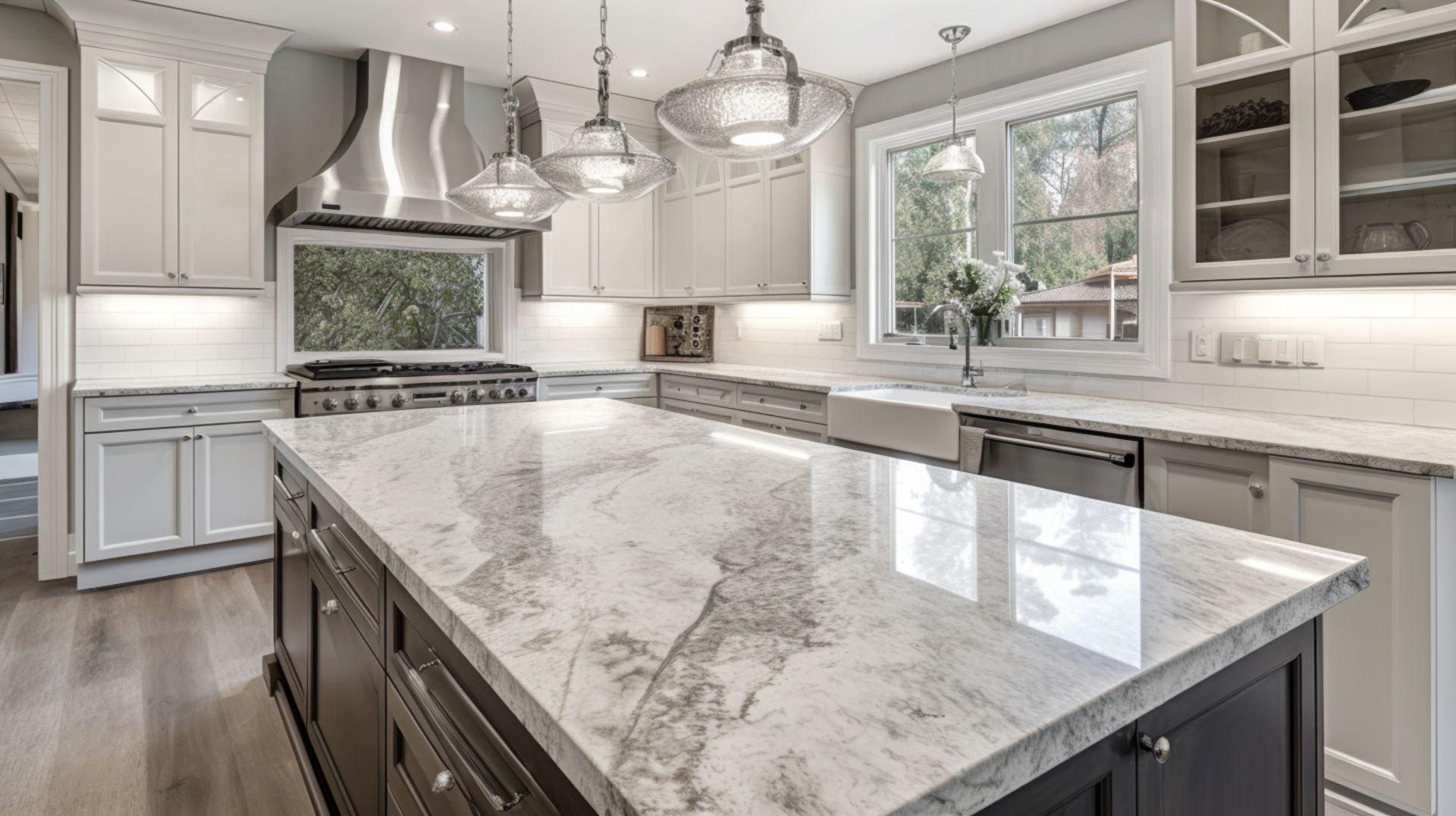
May 14, 2024
Designing a functional and aesthetically pleasing kitchen requires more than just picking out stylish cabinets and countertops. The kitchen layout determines how comfortably and efficiently the space can be used. Whether you are a homeowner planning a kitchen renovation or a designer looking to enhance your projects, understanding the science behind kitchen layouts is key. This article delves into the principles of effective kitchen design, offering insights to help create a space that is not only beautiful but also maximizes functionality. The Work Triangle The "work triangle" concept has been the cornerstone of kitchen design for decades. This layout principle involves the placement of the three most critical kitchen stations: the sink, the stove, and the refrigerator. The idea is that these elements should form a triangle, with each side ranging from 4 to 9 feet. This setup minimizes unnecessary movement and allows more efficient cooking and cleaning. Benefits of the Work Triangle: Efficiency: Reduces the steps needed to move between tasks, saving time during cooking and cleaning. Safety: Minimizes the risk of accidents by reducing traffic and congestion in the kitchen’s main working areas. Accessibility: Keeps important workstations within easy reach, enhancing the cooking experience. Kitchen Layout Options Understanding different layout configurations can help in choosing the right one for your space and needs. Here are several popular layouts and their unique advantages: 1. L-Shaped This layout features cabinets and fixtures on two adjacent walls, forming an L. It’s ideal for medium-sized kitchens and often includes a dining area. Advantages: Efficient for small to medium spaces, encourages a natural work triangle, and opens up the room for dining or gathering. 2. U-Shaped The U-shaped layout surrounds the cook on three sides with storage, counters, and appliances. It is suited for larger kitchens with ample floor space. Advantages: It maximizes counter and cabinet space, is great for multiple cooks in the kitchen, and easily supports a complete work triangle. 3. Galley Consisting of two parallel countertops with a walking area in between, the galley kitchen is a highly efficient layout, particularly for small spaces. Advantages: Streamlines cooking activities into a tight, efficient line, minimizing movement across the kitchen. 4. Island An island can be incorporated into large L-shaped, U-shaped, or open-plan kitchens. It provides additional counter space and can house appliances or serve as an informal dining area. Advantages: It adds extra prep and storage space, serves as a focal point for socializing, and can be equipped with sinks or cooktops to improve kitchen flow. Ergonomics and Storage Efficiency in kitchen design is not only about the placement of major appliances but also about ease of use and storage. Height Customization: Customize the heights of counters, sinks, and appliances to match the user’s comfort, reducing strain during food preparation and cooking. Storage Solutions: Utilize modern cabinetry solutions like pull-out drawers, carousel corners, and overhead cabinets that maximize space and accessibility. Collaborating with Blackstone for Custom Countertop Design When it comes to realizing the ideal kitchen layout, the choice of countertops plays a pivotal role. Working with a seasoned provider like Blackstone Stone & Marble can significantly enhance this aspect of your kitchen design. Blackstone's expertise in stone craftsmanship allows us to offer bespoke countertop solutions tailored to your specific design and functional needs. We provide a wide range of materials, from luxurious marble to resilient granite and versatile quartz, ensuring that whatever your preference or kitchen style, there’s a perfect match available. Final Thoughts The science of kitchen layouts is about creating a balance between aesthetic appeal and functional efficiency. By applying these principles, homeowners and designers can create kitchens that are visually appealing and provide comfort and ease during use. Remember, the best kitchen layout reflects the lifestyle and needs of its users, making thoughtful design crucial in every kitchen project. Collaborating with Blackstone means more than just choosing a material; it involves tapping into our deep knowledge of how countertops can complement the ergonomic flow of your kitchen. We can advise on the best shapes, sizes, and finishes to enhance your space's aesthetic appeal and functionality. Our precise fabrication processes also ensure that your countertops are beautifully crafted and fit perfectly into your designated kitchen layout, contributing to an efficient and harmonious environment. Whether renovating an existing space or starting from scratch, partnering with Blackstone can elevate your kitchen to a new level of sophistication and efficiency.
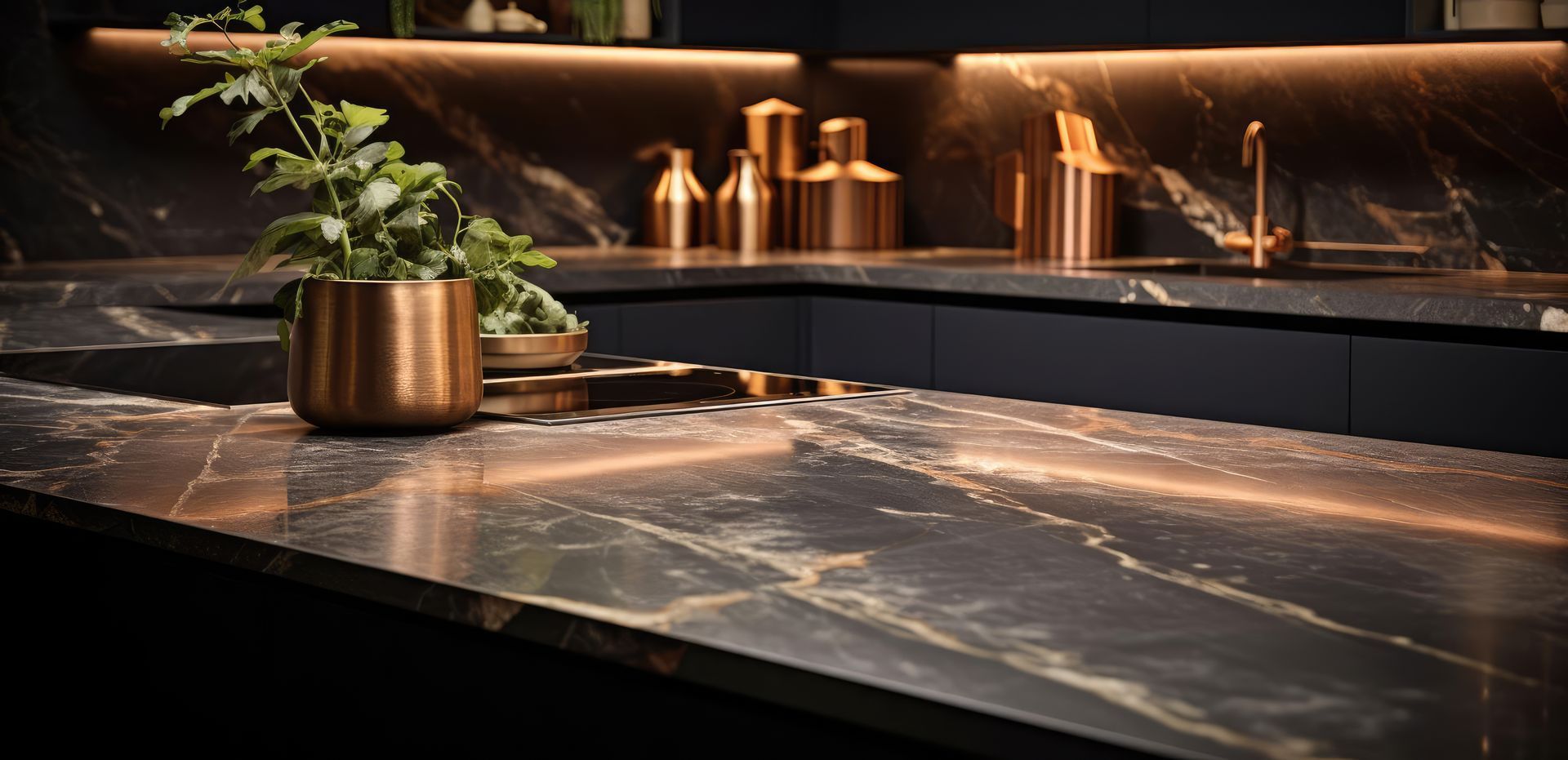
April 19, 2024
Stone surfaces, from granite countertops to marble vanities, add a touch of natural elegance to any home. However, their beauty and longevity depend significantly on proper care and maintenance. Here’s a comprehensive guide on how to keep your stone surfaces looking their best for years to come. Understanding Your Stone Before diving into maintenance, it’s important to identify the type of stone you have. Natural stone can be broadly categorized into two types: calcareous stones like marble and limestone, which are sensitive to acidic substances, and siliceous stones like granite and quartzite, which are more durable and acid-resistant. Knowing your stone type will dictate the care and products you should use. Daily Cleaning Practices For All Stone Types: Wipe Spills Immediately: Whether it’s wine on marble or coffee on granite, prompt cleaning can prevent stains and etching. Use a soft cloth or paper towel to blot spills gently. Use Mild Detergent: Avoid harsh chemicals. A few drops of mild dish soap mixed with water are sufficient for daily cleaning. Apply with a soft sponge or cloth. Dry Thoroughly: After washing, always dry the surface with a soft cloth to prevent streaks and water spots. For Calcareous Stone: Avoid Acidic Cleaners: Vinegar, lemon juice, and other acidic cleaners can etch marble and limestone. Stick to pH-neutral substances. For Siliceous Stone: Mild Bleach Solution for Stains: For tough stains on granite or slate, you can use a solution of water and a small amount of bleach, but always rinse thoroughly and dry. Dealing with Stains and Etches For Organic Stains: Poultice Application: Mix baking soda with water to form a paste, apply to the stain, cover with plastic wrap, and leave overnight. Remove with a soft cloth and rinse. For Oil-Based Stains: Cornstarch for Fresh Stains: Sprinkle cornstarch on fresh oil stains and leave for 10-15 minutes. Brush away and then clean with a mild detergent. For Etches on Calcareous Stone: Professional Re-polishing: DIY remedies for etches can be tricky and ineffective. It is often best to hire a professional to repolish and restore etched marble or limestone. Periodic Maintenance Sealing: Depending on the porosity of your stone, sealing may be necessary to protect against stains. Granite typically requires sealing every 1-2 years, while denser stones like quartzite may need less frequent sealing. Always use a sealant recommended for your specific stone type. Deep Cleaning: Schedule a yearly deep cleaning with a stone-safe cleaner to remove accumulated grime and sealant residue. Preventative Measures Use Trivets and Coasters: Protect your stone surfaces from heat and moisture by using trivets under hot dishes and coasters under beverages. Avoid Chopping Directly on Stone: Use cutting boards to prevent scratches and chips on your countertops. Felt Pads on Furniture: Use felt pads under furniture legs on stone flooring to prevent scratches when moving items. Following these care and cleaning tips, your stone surfaces can remain pristine and functional for years. Regular maintenance not only preserves the beauty of the stone but also protects your investment, ensuring that your home continues to showcase its natural elegance. Whether it’s your kitchen countertop or your bathroom vanity, a little attention goes a long way in maintaining the beauty of stone.
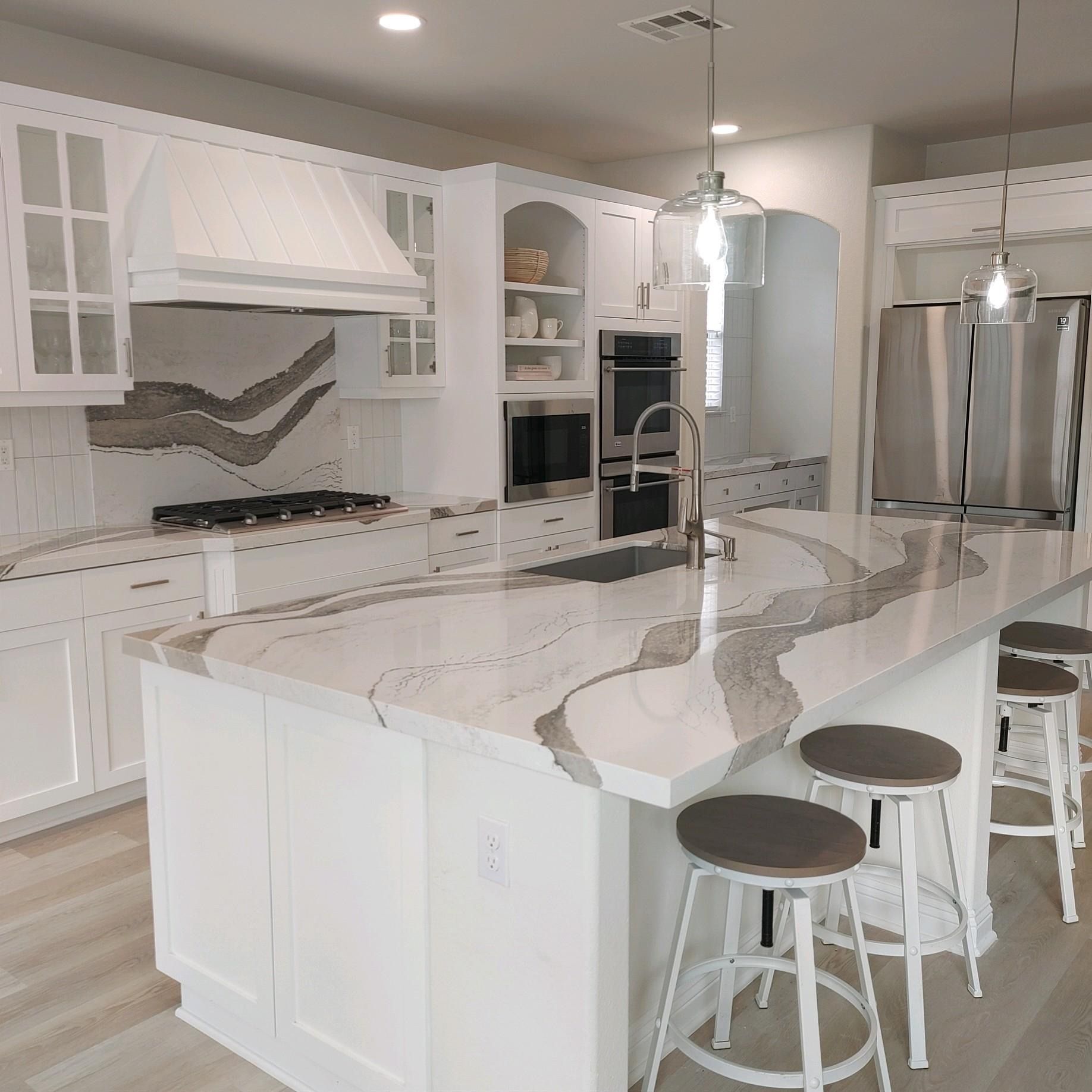
February 13, 2024
Quartz countertops have become a mainstay in modern kitchens and bathrooms, prized for their durability, low maintenance, and wide range of designs. However, with the proliferation of brands, choosing the right quartz can feel like navigating a dense jungle. This guide clarifies the path by comparing three of the most popular quartz brands: Cambria, MSI, and Silestone. We hope to help homeowners and designers make informed decisions tailored to their specific needs by examining their offerings. Cambria Strengths: Quality and Durability: Cambria is renowned for its durable quartz surfaces. It's made of 93% pure quartz, which makes it stronger than granite. Cambria surfaces are resistant to scratches, stains, and heat, making them ideal for kitchens and bathrooms. Design Variety: With over 200 design options, Cambria offers an extensive range of colors and patterns, from subtle to bold, mimicking the look of natural stone or presenting unique styles. Maintenance-Free: Cambria surfaces are non-porous, require no sealing or reconditioning, and are easy to clean with just soap and water. Warranty: Cambria provides a limited lifetime warranty, reflecting its confidence in product durability and customer satisfaction. Limitations: Price: Cambria is often at the higher end of the price spectrum, which may not fit all budgets. Availability: Being a premium product, Cambria might not be as readily available as other brands, requiring purchase through specific distributors or showrooms. MSI Strengths: Affordability: MSI offers competitive pricing, making it an attractive option for those looking for quality quartz surfaces on a budget. Selection: MSI boasts a vast selection of colors and patterns, including looks that replicate marble, granite, and other natural stones. Their collection is continually updated to reflect current trends and customer demands. Accessibility: MSI products are widely available through various retailers, making it easy to find and purchase quartz surfaces. Eco-Friendliness: MSI is committed to sustainability, offering products that include recycled materials and employing eco-friendly manufacturing processes. Limitations: Inconsistency: Due to the broad range of products and price points, there can be some inconsistency in the quality and appearance of MSI quartz. Warranty: The warranty coverage offered by MSI may not be as comprehensive as that of higher-end brands like Cambria. Silestone Strengths: Hygienic Surfaces: Silestone incorporates HybriQ+ technology, making their surfaces highly resistant to bacteria. This feature is particularly appealing for kitchens and healthcare settings. Innovation: Silestone is known for its innovative designs, including surfaces with integrated sinks and textured finishes. Color and Style Range: Silestone offers a wide range of colors and styles, including collections designed in collaboration with leading designers. Warranty: Silestone provides a 25-year warranty, showcasing their commitment to quality and customer satisfaction. Limitations: Price Variation: While Silestone offers a range of products, the more innovative and unique designs come with a higher price tag. Sensitivity to Heat: Although durable, Silestone surfaces can be more sensitive to heat than some competitors, requiring trivets and hot pads to prevent damage. Conclusion When it comes to choosing the right quartz brand for your project, consider your priorities: Are you looking for unparalleled quality and design variety, or are affordability and accessibility more critical? Cambria stands out for its premium quality and extensive design options but is cheaper. MSI offers a budget-friendly choice with a wide selection of styles, though it may vary in consistency. Meanwhile, Silestone excels in innovative designs and hygienic surfaces, balancing aesthetics and functionality. Ultimately, the best quartz brand for you will depend on your specific needs, budget, and style preferences. By understanding the unique offerings and limitations of Cambria, MSI, and Silestone, homeowners and designers can make informed decisions, ensuring the chosen quartz surface meets their expectations in both form and function. Choosing Blackstone Stone & Marble as Your Professional Stone Provider When embarking on a renovation or new construction project that involves quartz or other stone materials, selecting the right supplier is just as crucial as choosing the brand of the material itself. Blackstone Stone & Marble emerges as a distinguished provider in this space, offering unique advantages to homeowners and designers alike Contact Blackstone today to get started.

LOCATION
Showroom and Indoor Slab Yard
921 Poinsettia Ave Suite 7
Vista, CA 92081
Entrance (Grand Ave)
SHOWROOM HOURS
Monday – Friday: 8:30am to 5:30pm
Saturday: 10am to 3pm
REMNANT YARD
Monday – Friday: 11am - 3pm
by Appointments Only
© 2024 All Rights Reserved | Blackstone Granite & Marble Inc. | Website Design by GoBeRewarded

